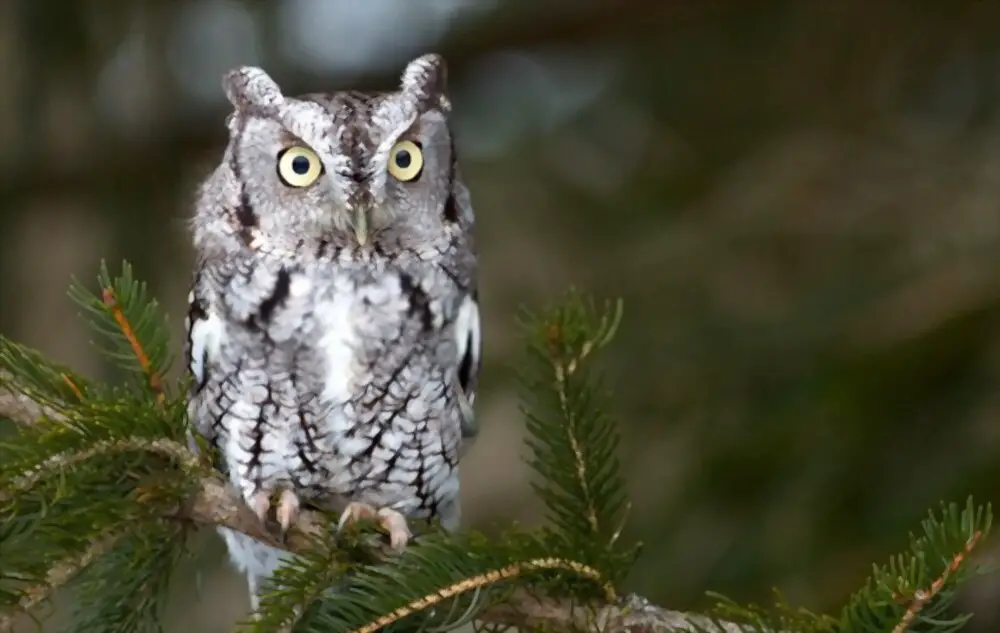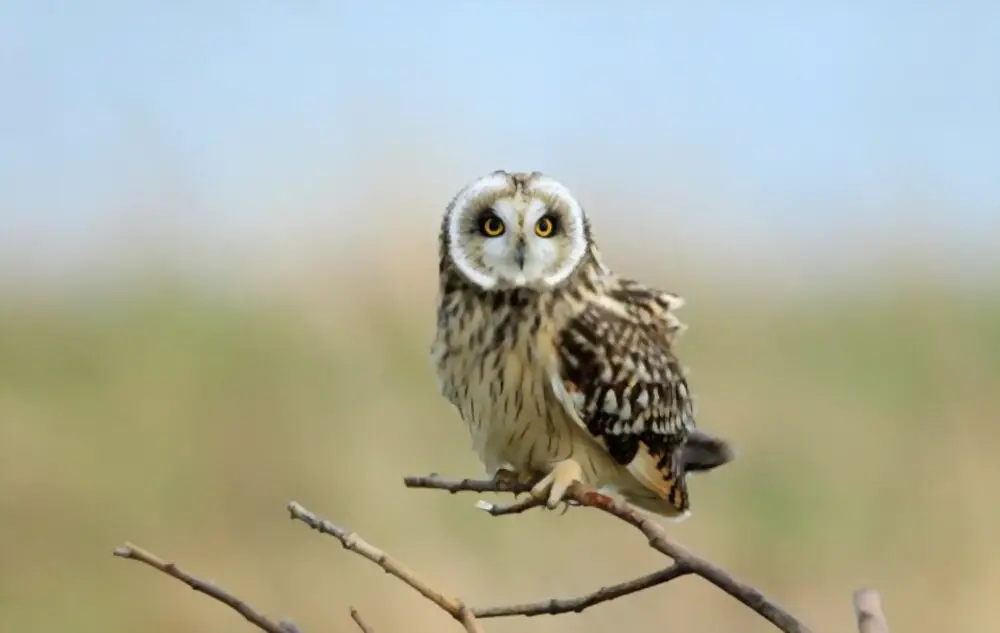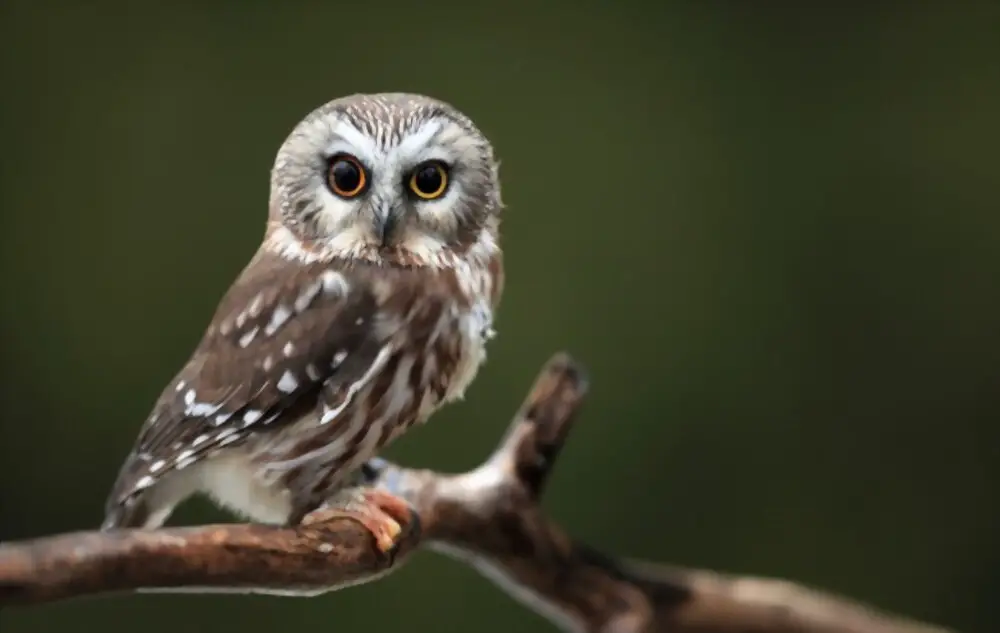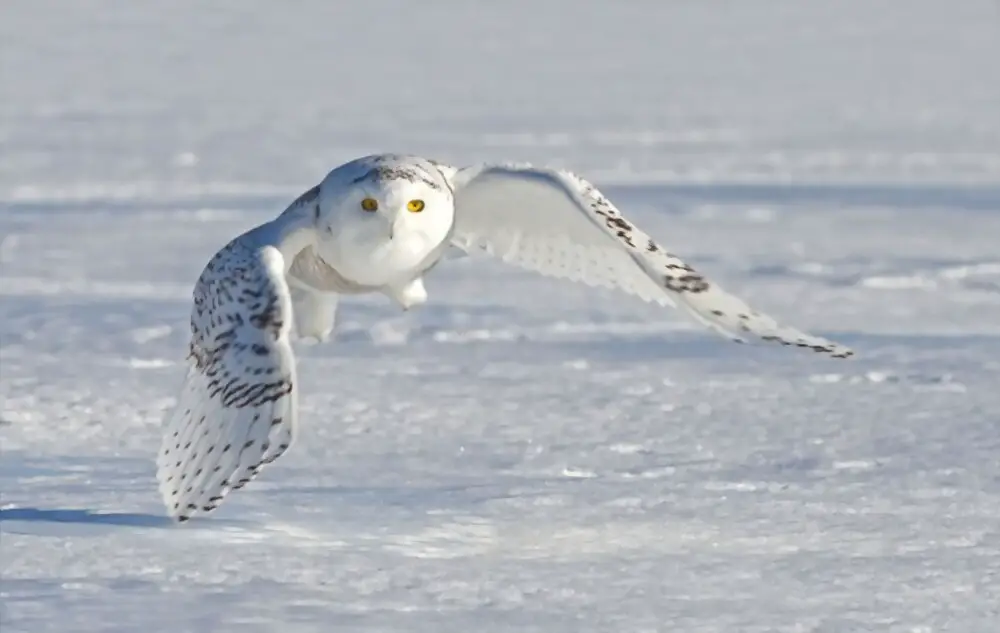Owls are some of the most beautiful and mystic creatures on earth. These nocturnal birds are essential to the ecosystem and an absolute pleasure to listen to at night.
They easily capture the attention of birdwatchers with their majesty and grace. The bird of the Greek goddess Athena is the owl.
Their nocturnal abilities and eerie hooting have been seen as signs of intelligence and even linked to the occult.
I’ve put out a list of 8 species of owls in the peach state.
The 8 types of Owls in Georgia
Quiet flight and secretive stalking methods have made them one of the most fascinating birds throughout the state of Georgia.
Georgia is known for its diversity of wildlife and the several different species of owls that frequent the state. Let’s know about 7 of these owl species here.
Great Horned Owl

Easily one of the most recognizable birds of prey, the great horned owl is known for its deep hoot. The tufts of feathers on their head and substantial yellow eyes are featured in countless storybooks and children’s shows.
The great horned is found not only in Georgia but throughout North America. Their habits include thick evergreen forests that have clearings and swamps.
The fluffy feathers on these birds not only keep them warm in the colder months but allow them the uncanny ability to fly in absolute silence. This is a considerable advantage when stalking prey and snaring small animals.
The diet of the great horned includes reptiles and bugs, small rodents, and even larger animals.
Eastern Screech Owl

Although these owls spend their time in Georgia year-round, they are tough to spot! Their reddish-brown and grey feathers give them phenomenal camouflage when blending into trees.
The eastern screech owl loves to nestle in empty trees throughout the forests and woods of the peach state. The holes in trees made by woodpeckers serve as ideal homes.
If you listen closely at night, you can hear their screeches which sound much like the whinny of a horse!
Barn Owls

Barn owls spend their time throughout Georgia and across the United States and keep themselves hidden during the day in dark places such as old barns or abandoned homes and buildings.
Their beautiful white faces are pale with dark eyes and grey markings on the head. Their bodies are a light tan color, though they appear as a flash of white when they are in flight. Seeing them soar through open fields, looking for their dinner is a sight to behold.
The barn owl is proficient at using sound to locate their prey and can do so under thick vegetation and snow. With their sharp talons, they capture their meals easily in dark conditions.
The barn owl swallows her meal whole and then spits out the remains in the form of pellets. She is unlike most owls and does not hoot but instead has an alarming screech.
Short-Eared Owls

Non-breeding short-eared owls are the only ones found in the state of Georgia, and they can frequently be seen in the daylight, which is not typical for owls. Dusk and dawn are excellent times to look for these types of owls in Georgia. You can try to spot them by looking for their pale faces and beautiful yellow eyes.
The smooth, stiff beat of their wings makes them move with grace through the air. They easily sail over the open field without making a sound.
When it is time to find their prey, their flight pattern changes remarkably. They fly closer to the ground and can change direction effortlessly.
Barred Owls

Found year-round in Georgia, these large owls with their lovely white plumage are a sight to behold. They are found in the lush evergreen forests of the state. Their dark eyes and mottled brown feathers help them to blend into trees as they roost during the day.
Barred owls will not travel far from their home as they set up their nesting areas in the forest where they look for a mate. They wait for nightfall to search for prey, and if you listen, you can hear their distinctive call.
Northern Saw-Whet Owl

Only the non-breeding species of these tiny owls are found in Georgia. Their unique name comes from the sound that a saw would make when sharpened on a whetting stone.
In January through May, if you listen attentively, you may be able to hear the sharp tooting of their call.
The northern saw-whet is not much bigger than a robin! Though they have large heads for their petite little bodies with brilliant cat-like eyes. But this owl is anything but a songbird and has been seen getting in spats with them!
Long-Eared Owl

These owls in North Georgia, of the non-breeding species, can be found throughout. They are not easy to spot as they are very good at keeping themselves hidden.
They will hide in dense forests and move out to open areas at night to feed.
They are agile hunters and use their ultra-sensitive hearing to stock their prey even in the pitch black.
Snowy Owl – Bubo scandiacus

Snowy owls are are to be seen in Georgia but they can be recognized easily due to their white plumage with bits of brown and black.
The males are more whiter as compared to females. They have rounded wingtips and yellow eyes.
These owls are found in fields, airports and near water bodies.
However, we have included this in our list but so far they have been only 4 times in last 70 years in Georgia.
Conclusion
Owls in Georgia remain some of the most fascinating birds of prey and have always been a symbol of mystery. I hope learning the different species of owls in the state has been entertaining.
Those living in Georgia and surrounding states are fortunate as they have the opportunity to listen for these wonderful creatures.
Owls are the ultimate silent night stalker and will continue to be one of the most magnificent animals on our planet.


